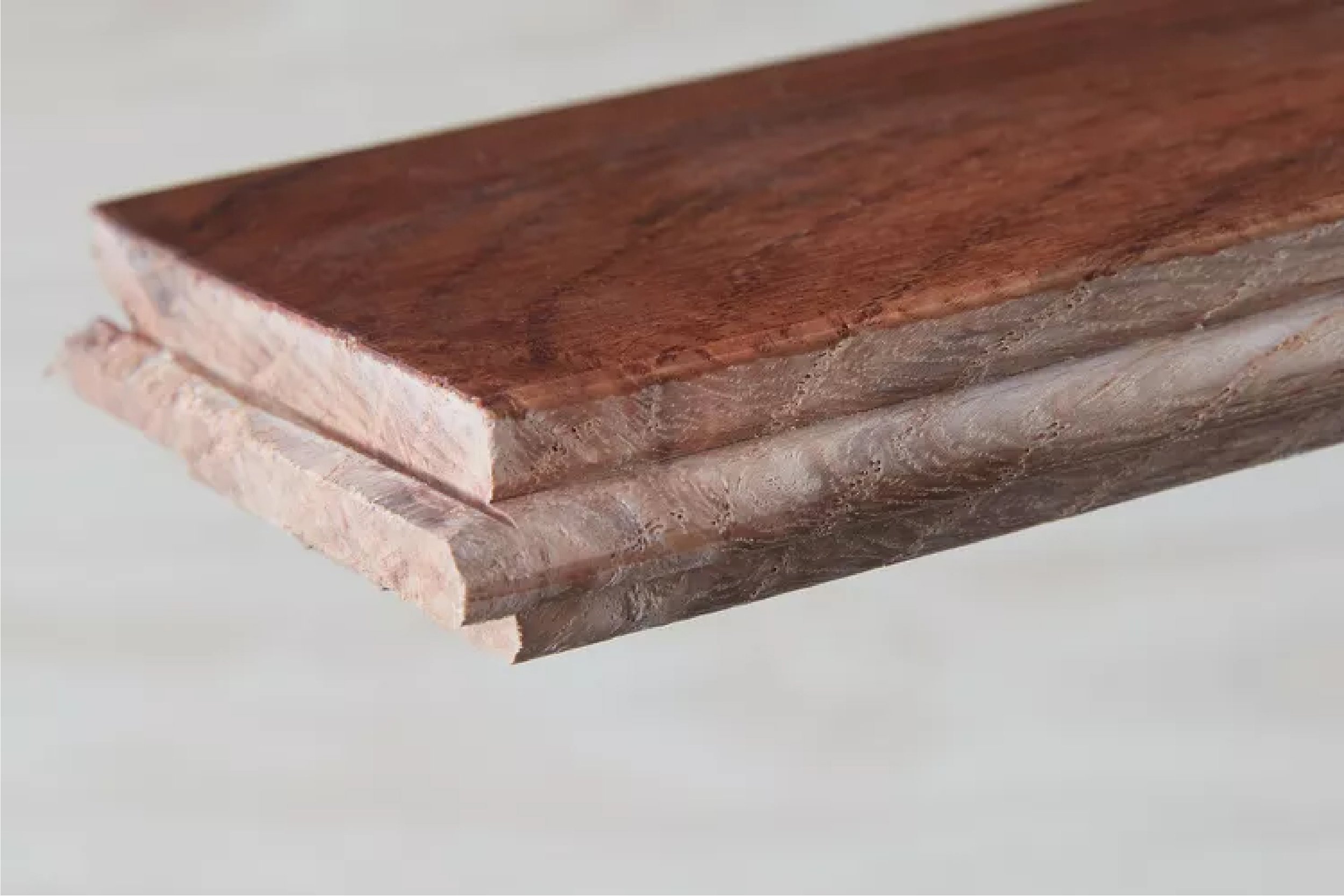How do I know if my floorboards are engineered timber or solid timber?
If you're planning to sand and refinish your timber floors, it's essential to know which type of timber you have, as engineered timber and solid timber have different limitations and require different sanding techniques.
It can sometimes be difficult to determine whether you have engineered timber flooring or solid timber flooring, but we’ve outlined some tips to help you determine which type of timber you have in your home.
Look at the edge of a floorboard
One of the easiest ways to distinguish between solid and engineered timber flooring is to look at the edge of a floorboard.
Solid timber flooring will have a consistent, uniform grain pattern running through the entire thickness of the board.
In contrast, engineered timber flooring will have a thin layer of real wood (known as the wear layer) on top of a thicker substrate layer (such as plywood or MDF). You can typically see the substrate layer from the side of the board, which will appear as a different colour or texture than the wear layer.
1st: Engineered Timber Floorboard 2nd: Solid Timber Floorboard
Images: Margot Cavin / The Spruce
How can I view the edge of my floorboards?
To inspect the edge of your floorboards it's important to locate an area where you can easily access a board.
One option is to remove an air vent in your flooring or look for gaps around doors or baseboards that can be easily removed. Once you have access you can either lift up the board if possible or slide a thin mirror down the gap.
Tip: Running a damp cloth along the cut edge of the board can be helpful, especially for engineered timber. This can make it easier to spot the separation between the real wood veneer and the substrate layer.
Tap the floorboards
If you tap on a solid timber floorboard, it will produce a deep, reverberating sound. In contrast, engineered timber flooring can produce a slightly hollow or tinny sound when tapped, due to the substrate layer.
Look for a repeating pattern
Engineered timber flooring is often made by taking a single piece of timber and slicing it into thin layers, which are then bonded together to create the boards. This can result in a repeating pattern of grain and knots in the flooring. In contrast, solid timber flooring will have a more random pattern of grain and knots.
Look for signs of wear and tear
Solid timber flooring will show signs of wear and tear differently than engineered timber flooring. Solid timber shows dents and scratches that are consistent with the grain pattern of the wood, whereas engineered timber flooring may show wear and tear in a more uniform way due to the wear layer being a different material than the substrate layer.
Can You Sand & Polish Engineered Flooring?
As engineered timber floors only have a thin layer of real wood veneer they are less durable and can’t handle aggressive sanding. You can typically only sand down and refinish these boards once or twice in their lifetime (compared to an average of four times for solid timber floors).
If you do mistakenly sand an engineered timber floor too aggressively, you risk sanding through the veneer layer, which can cause irreparable damage.
Sydney’s Floor Sanding Experts
Are you wanting to sand and refinish your timber floors but are still unsure if they’re engineered or solid timber?
No worries!
Pittwater Eco are a local Sydney floor sanding company who can help advise which type of timber floors you have and organise a quote that’s best suited to your flooring and needs.
Our team of experts have years of experience in floor sanding & polishing and are dedicated to helping our clients get the most out of their floors.




